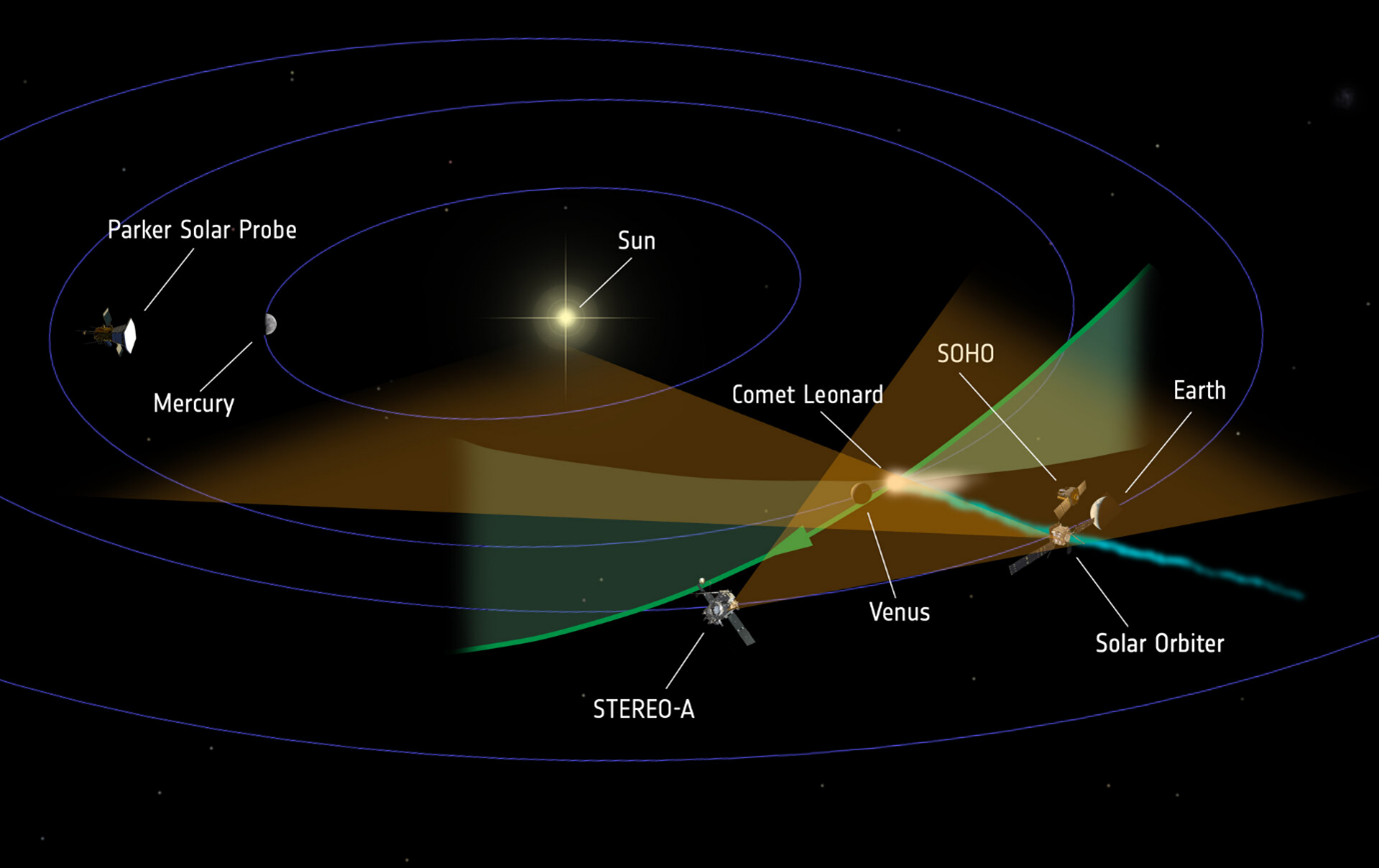The Prediction of, and Results from Solar Orbiter's encounter with Comet C/2021 A1 (Leonard).
- 1University College London, Mullard Space Science Laboratory, Centre for Planetary Sciences, United Kingdom
- 2Imperial College London, Faculty of Natural Sciences, Department of Physics, United Kingdom
As the solar wind encounters a comet, ionized gas released from the nucleus propagates away from the Sun with the wind, forming the ion tail of the comet that can stretch for multiple astronomical units. The transport of cometary material antisunward of the comet provides opportunities to measure the cometary composition and plasma interactions at a significant distance from a comet’s nucleus. Serendipitous crossings by spacecraft of comets’ ion tails is a surprisingly commonplace occurrence, but can go unnoticed, as any measured plasma fluctuations can be small.
Using the measured flow of the solar wind at the spacecraft, we can estimate the motion of the solar plasma upstream of the spacecraft, and compare this trajectory with the locations of known comets. This method can uncover previously unnoticed ion tail encounters and predict future encounters.
In December 2021, while comet C/2021 A1 (Leonard) traversed the ecliptic plane, sunward of the spacecraft Solar Orbiter, the spacecraft was immersed in the comet’s ion tail. This encounter was predicted using a range of estimated solar wind velocities to estimate the motion of solar wind plasma to the spacecraft. A wealth of data was collected during the encounter, including results from multiple instruments that support the prediction. We present data returned from the SWA and magnetometer instruments, providing information on the structure of the induced magnetotail. Additionally, images of comet Leonard’s ion tail from other spacecraft during the encounter provide a uniquely complete picture of the tail crossing.
Fig: Orbital configuration of comet Leonard and Solar Orbiter on 18th December 2021, during which Solar Orbiter was immersed in the ion tail of comet Leonard.

How to cite: Grant, S., Jones, G., Owen, C., and Matteini, L.: The Prediction of, and Results from Solar Orbiter's encounter with Comet C/2021 A1 (Leonard)., Europlanet Science Congress 2022, Granada, Spain, 18–23 Sep 2022, EPSC2022-1106, https://doi.org/10.5194/epsc2022-1106, 2022.

